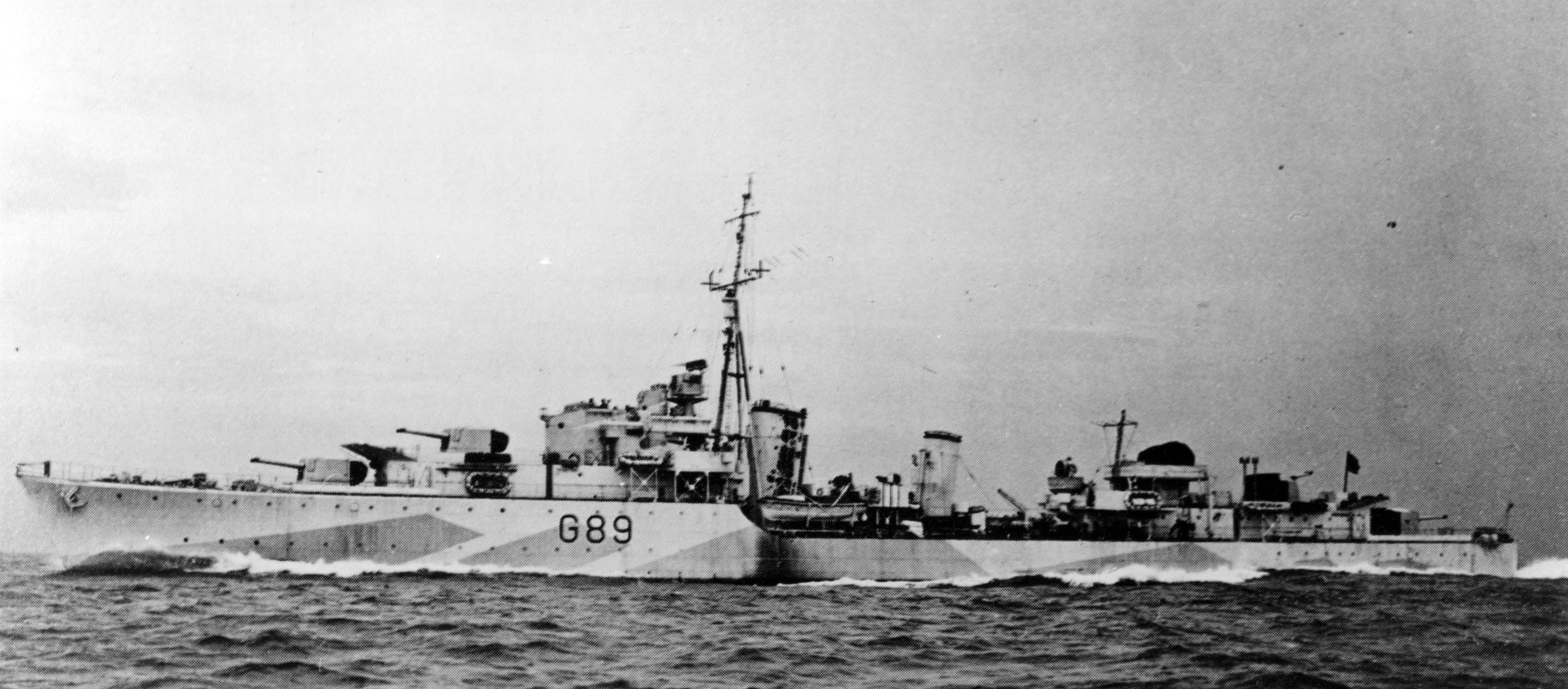HMCS IROQUOIS (1st) (G89)

HMCS IROQUOIS (1st)
The History of HMCS IROQUOIS (1st)
The first of the Canadian Tribals to commission, she did so at Newcastle-on-Tyne, on November 30, 1942. Iroquois was assigned to the 3rd Flotilla, Home Fleet, but proved to have structural flaws and was not fully operational until January 30, 1943. On a quick round trip to Canada in march, she incurred weather damage that kept her under repairs at Plymouth until early June, following which she was employed on Gibraltar convoys. In July three troopships she was escorting to Freetown were attacked by German aircraft 300 miles off Vigo, Spain, and two were sunk, Iroquois rescuing 628 survivors from the Duchess of York. Iroquois then spent several months escorting Russian convoys. In February, 1944, she arrived at Halifax for a refit, returning to Plymouth early in June to join the 10th Flotilla for invasion duties. After D-Day she carried out patrols in the Channel and the Bay of Biscay, and for some months escorted capital ships and troopships in U.K. coastal waters. She rejoined the Home Fleet at Scapa Flow in March, 1945, escorted one more convoy to Russia and, following D-Day, sailed to Oslo as an escort to Crown Prince Olaf, who was returning to liberated Norway. Shortly afterward she visited Copenhagen, whence she escorted the German cruisers Prinz Eugen and Nurnberg to Kiel for their formal surrender. On June 4 she left Greenock with Haida and Huron for home. The end of the Pacific war brought a halt to her tropicalization refit, and Iroquois was paid off on February 22, 1946. The following year she began a long refit and on June 24, 1949, was re-commissioned as a cadet training ship. In 1952 and 1953 she did two tours of duty in the Korean theatre, following which she returned to her training role until paid off at Halifax on October 24, 1962, and laid up at Sydney. she was broken up at Bilbao, Spain, in 1966.
HMCS IROQUOIS (1st) Statistical Data
- Pendant: G89
- Type: Destroyer
- Class: TRIBAL 1940s
- Displacement: 1927 tonnes
- Length: 377 ft
- Width: 37.5 ft
- Draught: 11.2 ft
- Speed: 36 kts
- Compliment: 14 Officers and 245 Crew
- Arms: 6-4.7" (3 x II), 2-4" (1 xII), 4-21" Torpedo Tube (1 x IV), 4-2 pdrs., 6-20mm.
- Builder: Vickers-Armstrongs Ltd., Newcastle-on-Tyne. U.K.
- Keel Laid: 19-Sep-40
- Date Launched: 23-Sep-41
- Date Commissioned: 30-Nov-42
- Paid off: 22-Feb-46
Remarks
Later recommissioned with pendant 217. Paid off 24 Oct 62.
